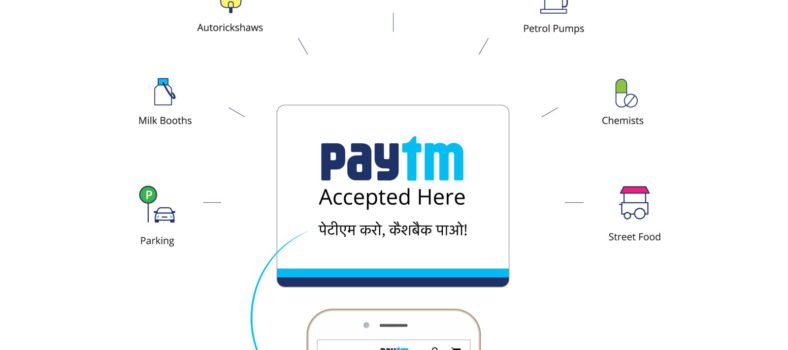 By Daniel Kornitzer
By Daniel Kornitzer
Increased mobile penetration and a growing level of consumer comfort with making payments through a smartphone or tablet continues to impact consumer spending habits across the globe, including Canada.
To measure the impact of this trend, Paysafe surveyed consumers from Canada, the U.S., U.K., Germany and Austria for Lost in Transaction: Payment Trends 2018, our annual consumer research report. The results painted a clear picture of how improved technology, changing consumer habits and new regulations are reshaping the role of mobile in making card present (CP) and card not present (CNP) payments.
In the report, nine per cent of consumers stated that they had made purchases in-person using mobile wallets in the past month. At the same time, 10 per cent of consumers from the same regions that were questioned on this topic confirmed that they had made a purchase in-app during the previous month.
And this isn’t a trend that will fizzle out in 2019. Here are the factors that will ensure mobile payments continue to be at the forefront of payment innovation for the foreseeable future.
The role of biometrics
Mobile or m-commerce, even with mobile-optimized web pages or in-apps, has often been clunky, delivering a poor user experience due to a lack of mobile native payment authentication processes. However, the introduction of biometric authentication through fingerprint technology or facial recognition is a significant upgrade in this area. This will be particularly relevant as Visa and Mastercard roll out their new 3D Secure 2.0 authentication process, of which authentication by “who you are” (biometrics) will be a key component.
And not only will a vastly improved authentication process make CNP payments on mobile more appealing for a user experience perspective, biometric authentication will also likely appeal to consumers with security concerns about making online payments. Indeed, 64 per cent of Canadian consumers and an even higher proportion of Americans surveyed (68 per cent) by Paysafe said that they found two-factor authentication systems more appealing when shopping online.
Contactless payments gaining momentum
In the U.K. the adoption of contactless technology, which has been part of the payment landscape for over a decade, has skyrocketed. In Lost in Transaction, 54 per cent of U.K. consumers told us that they had made a contactless payment in the previous month. According to a recent Mastercard report, almost half (46 per cent) of all in-store transactions in that country are today made via contactless.
While the majority of contactless transactions are still made using credit and debit cards, consumers that have adopted mobile wallet technology are overwhelming positive about its benefits, leading us to believe that we will see greater adoption moving forward. An overwhelming majority (84 per cent) of mobile wallet adopters said that paying using their mobile devices was more convenient than cash and over three-quarters (77 per cent) agreed that mobile wallets were more convenient than contactless cards.
We expect to see the number of mobile wallet users rise in 2019, as awareness of their benefits filter into the mainstream. Adopters will also use their mobile wallets more frequently. A large majority (85 per cent) of current mobile wallet adopters told us that they would be using their mobile wallets much more for making payments by 2020. Furthermore, three quarters (74 per cent) stated that they would use their mobile wallets to pay for higher-priced items if the value limit for contactless payments was raised.
And whilst adoption of contactless technology in North America is generally much lower than in the U.K., awareness of mobile wallets is more equitable. Four out of ten Canadians (42 per cent and more than half (54 per cent) of American consumers have used a mobile wallet to make a payment, compared to 56 per cent of U.K. consumers. And close to two-thirds of North American consumers—58 per cent of Canadians and 61 per cent of Americans—revealed that they preferred to shop at stores that offered contactless payments at the checkout.
But perhaps the biggest driver of in-store mobile wallet adoption in 2019 and beyond will be the manner with which businesses are embracing the new technology.
For our Lost in Transaction: The future of payments for SMBs report, published in October 2018, we asked small and medium-sized businesses (SMBs) about their priorities for improving the checkout experience. Raising the number of available payment methods and increasing the speed of the checkout were the key takeaways. For these reasons, the number of businesses in Canada and the U.S. that accept in-store payments by mobile wallets is expected to increase by more than 100 per cent by 2020, from a total of 29 per cent to 62 per cent.
Consumer appetite
Much as the adoption of contactless as a solution allowing more convenient commerce payments, consumers also now demand a secure and convenient alternative to cash when making payments to friends, family or peers.
This is why demand for peer-to-peer payment (P2P) capabilities through digital apps has been a growing trend for several years, particularly in the U.S., with quarter-on-quarter payment volume growth exceeding 20 per cent for several industry leading providers in this area1. It was predicted that 63.5 million Americans (32 per cent of smartphone users) made a payment on a P2P app in 2017, according to eMarketer’s research2. This figure grew to 82.5 million users in 20183.
It is unsurprising that tech giants, including Apple, Facebook and Google have launched products that will continue to boost adoption of these apps. Industry commentators have predicted that the total transaction value of mobile P2P payments will have grown 37 per cent in 2018 in the U.S. to $167 billion and this figure could rise to surpass $300 billion by 20214.
Whether it is a payment via a P2P app on a smartphone, the rising use of mobile wallets or more sophisticated biometric technologies for payment authentication on a mobile device, the future of payments is on the move: quite literally.
Daniel Kornitzer is chief business development officer, Paysafe Group (www.paysafe.com). Daniel is responsible for developing strategic partnerships designed to meet customer needs and grow new revenues. He has over 20 years’ experience in technology management. Daniel holds a B. Eng. in Electrical Engineering from Ecole Polytechnique, a M.Eng. from McGill University and a diploma in Network Engineering from the University of Toronto.
1 Rahul Chadha, “Mobile Proximity and Peer-to-Peer Payments 2018”, report, eMarketer, August 13, 2018.
2 eMarketer, “P2P Payment Transactions to Exceed $120 Billion This Year”, report, July 18, 2017.
3 Caroline Cakebread, “Who’s Using P2P Payments in the US?”, infographic, eMarketer, December 5, 2018.
4 “Zelle Will Overtake Venmo in 2018”, article, eMarketer, June 13, 2018.



